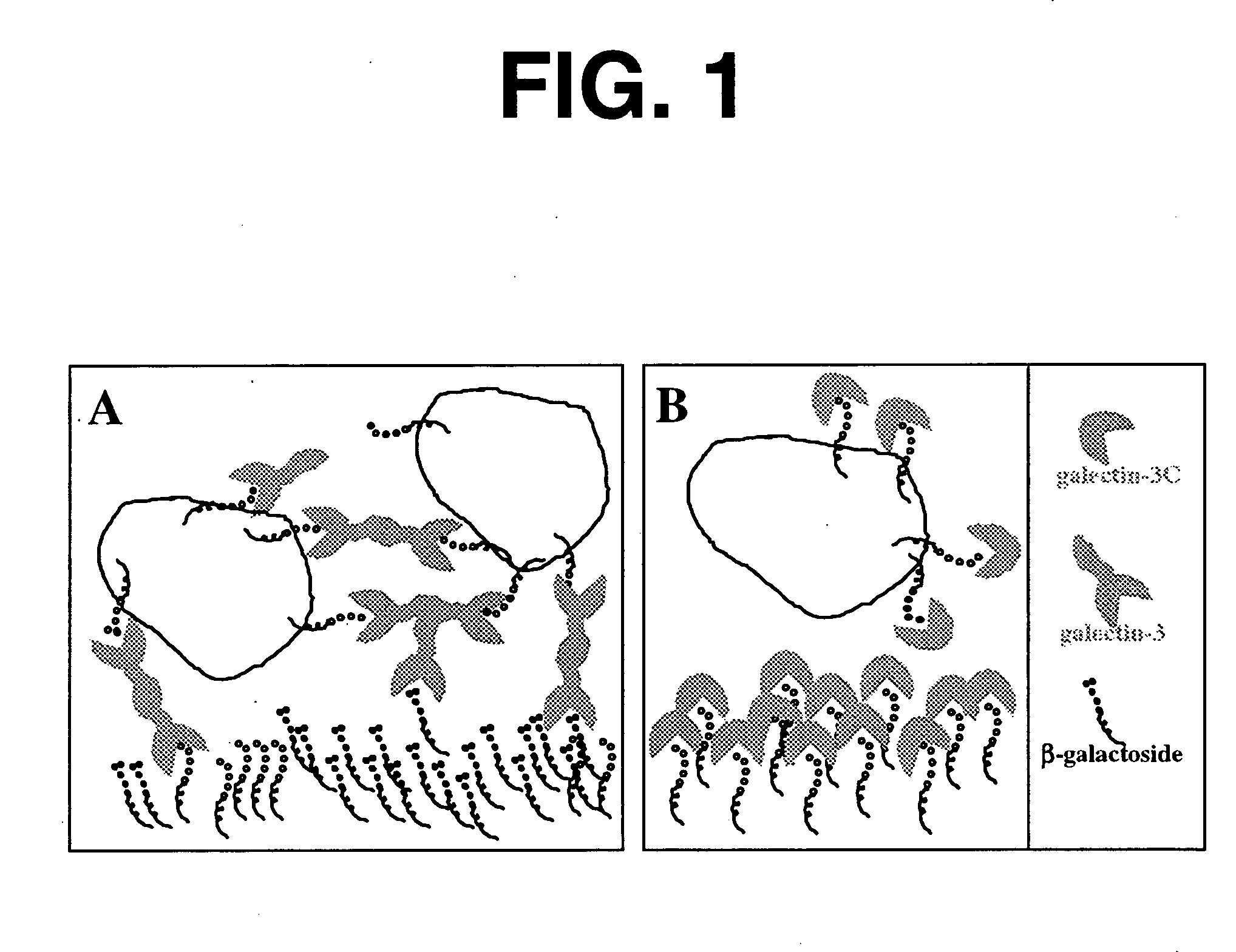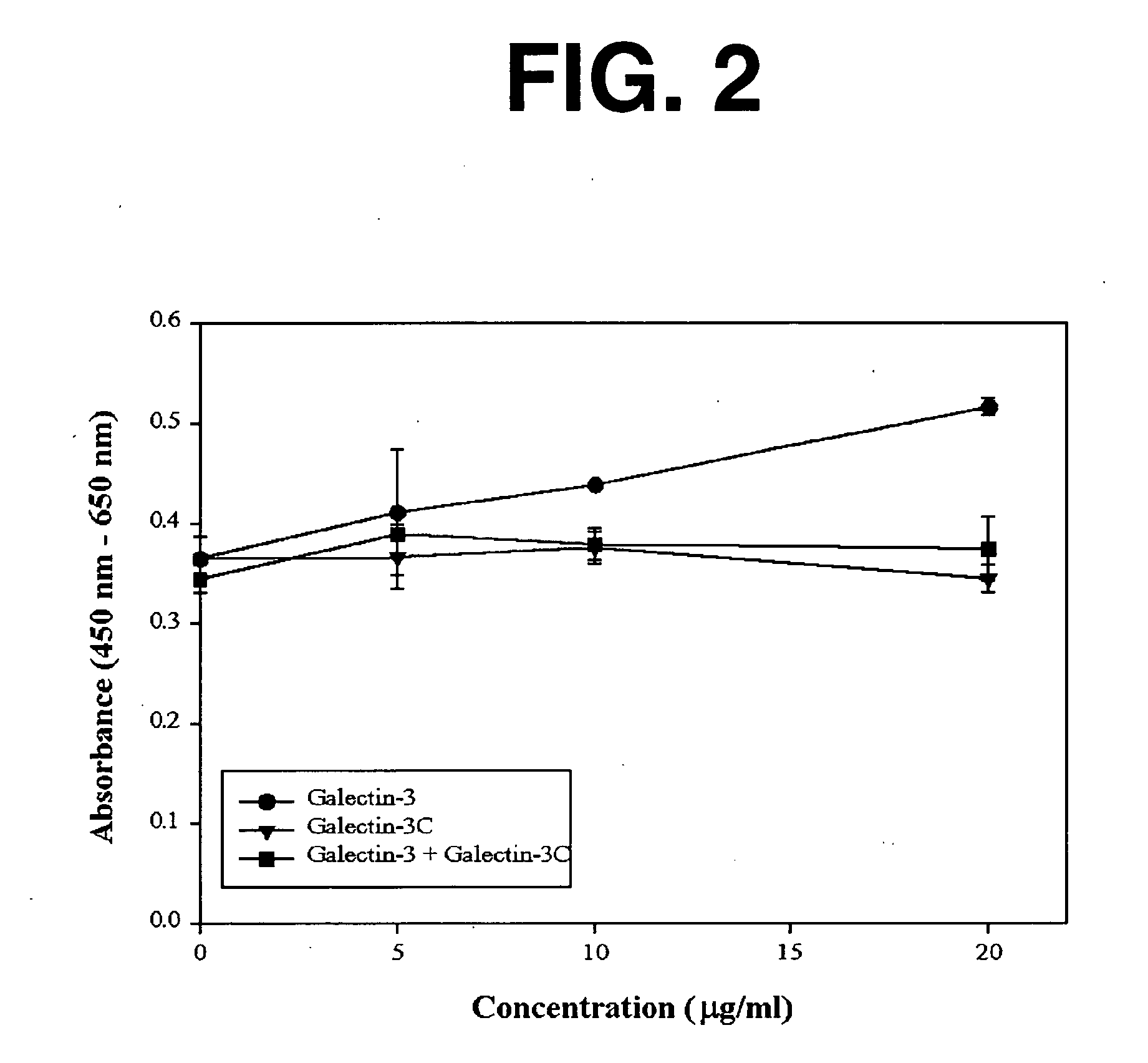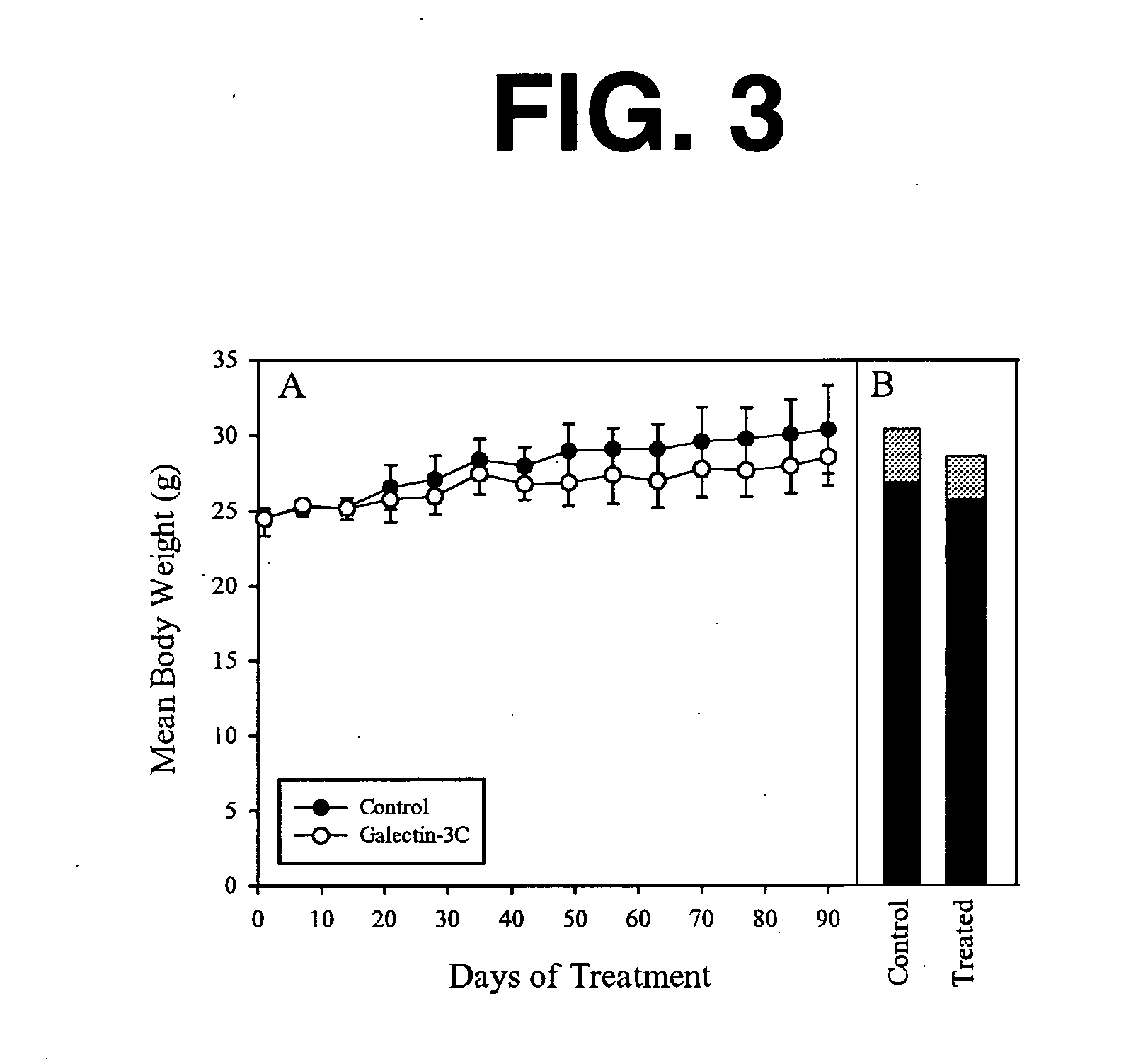Sustained release N-terminally truncated galectin-3 and antibodies to galectin-3 carbohydrate ligands for use in treating disease
a technology of n-terminal truncation and antibodies, which is applied in the direction of antibody medical ingredients, peptide/protein ingredients, peptide sources, etc., can solve the problems of increased tumorigenicity and metastasis, decreased expression of galectin-3, complex role of galectin-3 in cancer, etc., to prevent cross-linking activity, promote multimerization, and promote the effect of protein multimerization
- Summary
- Abstract
- Description
- Claims
- Application Information
AI Technical Summary
Benefits of technology
Problems solved by technology
Method used
Image
Examples
example 1
[0144] As background for the following example, mounting evidence suggests that tumor cells express the .beta.-galactoside-binding lectin galectin-3 on their surfaces and that tumor cells metastasize partly due to processes involving cellular adhesion and aggregation mediated by galectin-3. Galectin-3 binds via its C-terminus carbohydrate recognition domain to binding sites in the extracellular matrix. The goal of this research was the evaluation of a potential therapeutic agent for breast cancer based on galectin-3 lectin that acts directly to reduce metastases. Soluble recombinant N-terminally truncated galectin-3 competes with endogenous galectin-3 for carbohydrate binding sites in the extracellular matrix and cell-cell adhesions important in tumor invasion and metastasis. The N-terminal domain of galectin-3 promotes multimerization of the protein, and enables it to cross link cancer cells to the matrix and other cells. Excess administered N-terminally truncated galectin-3, in wh...
example 2
[0193] As background for the following example, the first PEGylated protein that was approved for use in the United States by the Food and Drug Administration was PEG-adenosine deaminase (PEG-ADA), for patients with severe combined immunodeficiency disease. Second to be approved was PEGylated asparaginase, used for the treatment of acute lymphoblastic leukemia. Also, the PEGylated version of interferon-alpha has been approved for human use (125).
[0194] Most proteins are cleared from the circulation by the reticuloendothelial system (RES), kidney, spleen, or liver. Clearance depends on the size, charge, glycosylation, and cellular receptors of the protein. Metabolism by proteases and peptidases also can lead to loss of biological activity and degradation. Modification of proteins with PEG can extend their half-life from 3 to 486-fold (126). The extension of half-life can be partly due to increasing the molecular weight of the modified protein until it is large to make the cut-off for...
example 3
[0213] Polymeric microspheres have been used in formulations of proteins to achieve sustained delivery, and have been approved as part of several different products for humans. Biodegradable poly(lactic-co-glycolic acid) (PLGA) has been widely used as a material for microencapsulation to attain sustained release (130-132). The microspheres are produced by a number of techniques, including freeze-drying or atomizing with gas anti-solvent CO.sub.2 precipitation (130-133). The resultant nanoparticles are analyzed by scanning electron microscopy (134).
[0214] Encapsulation of (.DELTA.1-107) galectin-3 with poly(lactic-co-glycolic) Acid microspheres.
[0215] A modification of the procedure of Lam et al. that was used to achieve a product that produced controlled release of nerve growth factor over a period of 14 days was employed (131). Purified (.DELTA.1-107) galectin-3 is formulated at 5 mg / ml in two buffer systems and then lyophilized. The buffer systems can be a 5 mM histidine at pH 5.5...
PUM
| Property | Measurement | Unit |
|---|---|---|
| Size | aaaaa | aaaaa |
| Nucleic acid sequence | aaaaa | aaaaa |
Abstract
Description
Claims
Application Information
 Login to View More
Login to View More - R&D
- Intellectual Property
- Life Sciences
- Materials
- Tech Scout
- Unparalleled Data Quality
- Higher Quality Content
- 60% Fewer Hallucinations
Browse by: Latest US Patents, China's latest patents, Technical Efficacy Thesaurus, Application Domain, Technology Topic, Popular Technical Reports.
© 2025 PatSnap. All rights reserved.Legal|Privacy policy|Modern Slavery Act Transparency Statement|Sitemap|About US| Contact US: help@patsnap.com



